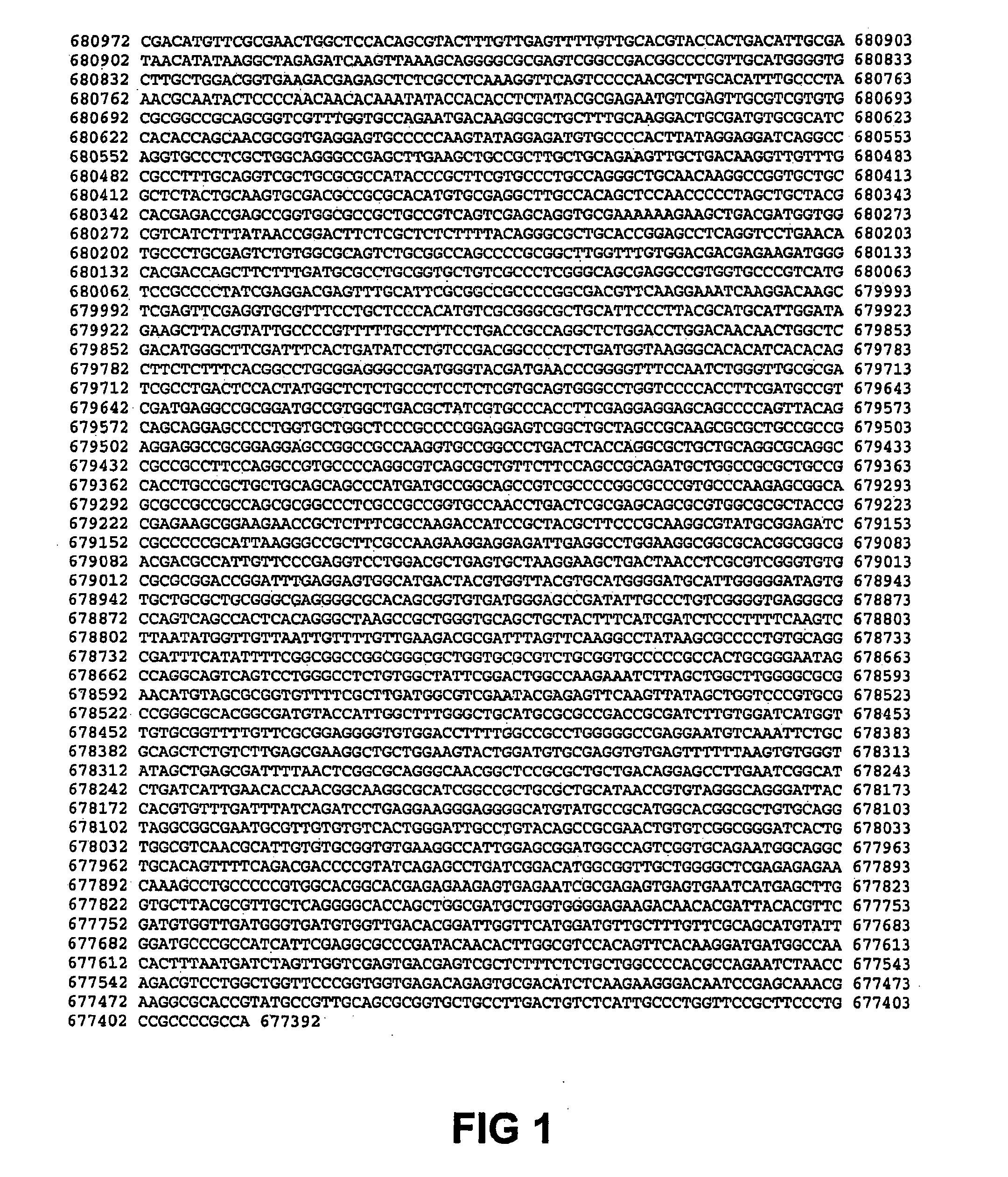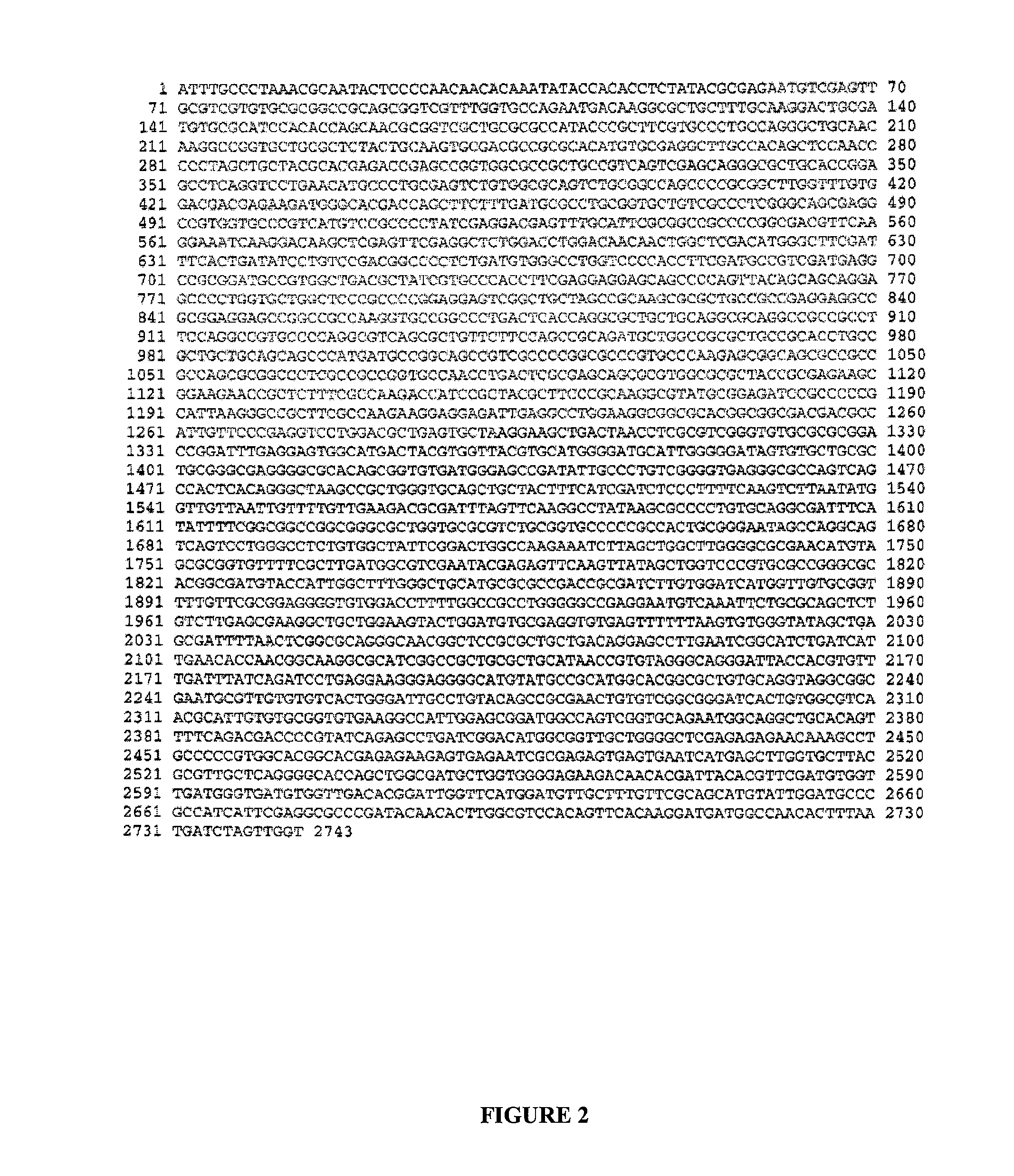Regulatory Factors Controlling Oil Biosynthesis In Microalgae And Their Use
a technology of biosynthesis factors and oil, applied in the direction of peptide sources, applications, peptides, etc., can solve the problems of limited production of commercially desirable specific oils in plants on a large scale, insufficient quantity and yield to provide a commercially valuable product, and low specific desired fatty acid levels of oil
- Summary
- Abstract
- Description
- Claims
- Application Information
AI Technical Summary
Benefits of technology
Problems solved by technology
Method used
Image
Examples
Embodiment Construction
[0119]The present invention is related to biosynthetic oil compositions and methods of making thereof. The present invention contemplates using plant material (i.e., for example, algae) comprising recombinant transcription inducing factors for biosynthetic oil genes. In some embodiments, the inducing factors are transcription factor regulatory proteins.
[0120]The presently contemplated invention addresses a widely recognized need for the development of biomass-based domestic production systems for high energy liquid transportation fuels. In one embodiment, the present invention contemplates inducing oil (i.e., for example, triacylglycerol) biosynthesis in microalgae. This novel inventive concept provides new insights that lay the foundation for rational engineering of algae-based production systems for high energy fuels. Initial efforts are focused on the unicellular model green alga Chlamydomonas reinhardtii with its abundance of genetic and genomic resources.
I. Oil Biosynthesis fro...
PUM
| Property | Measurement | Unit |
|---|---|---|
| pH | aaaaa | aaaaa |
| total volume | aaaaa | aaaaa |
| temperature | aaaaa | aaaaa |
Abstract
Description
Claims
Application Information
 Login to View More
Login to View More - R&D
- Intellectual Property
- Life Sciences
- Materials
- Tech Scout
- Unparalleled Data Quality
- Higher Quality Content
- 60% Fewer Hallucinations
Browse by: Latest US Patents, China's latest patents, Technical Efficacy Thesaurus, Application Domain, Technology Topic, Popular Technical Reports.
© 2025 PatSnap. All rights reserved.Legal|Privacy policy|Modern Slavery Act Transparency Statement|Sitemap|About US| Contact US: help@patsnap.com



